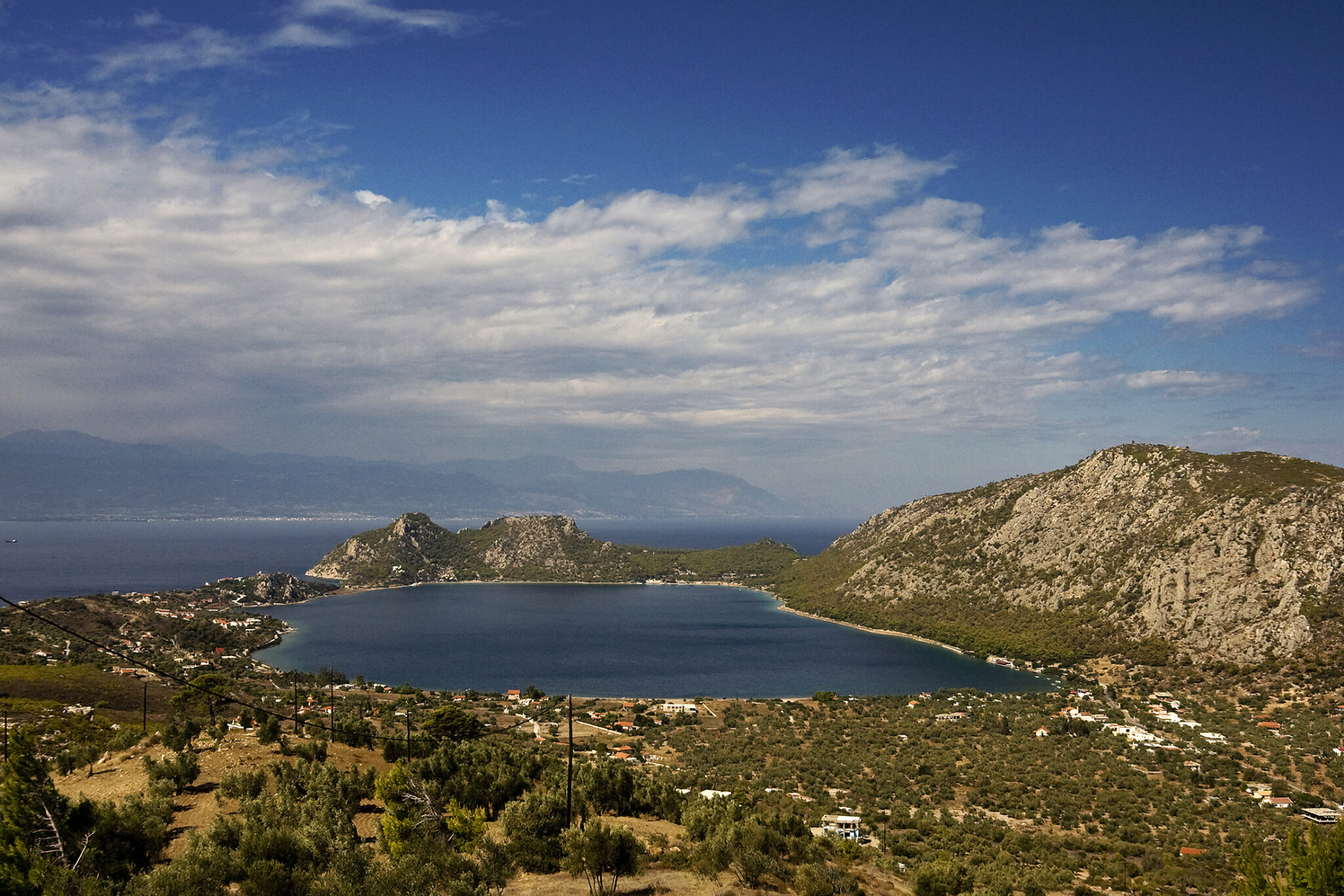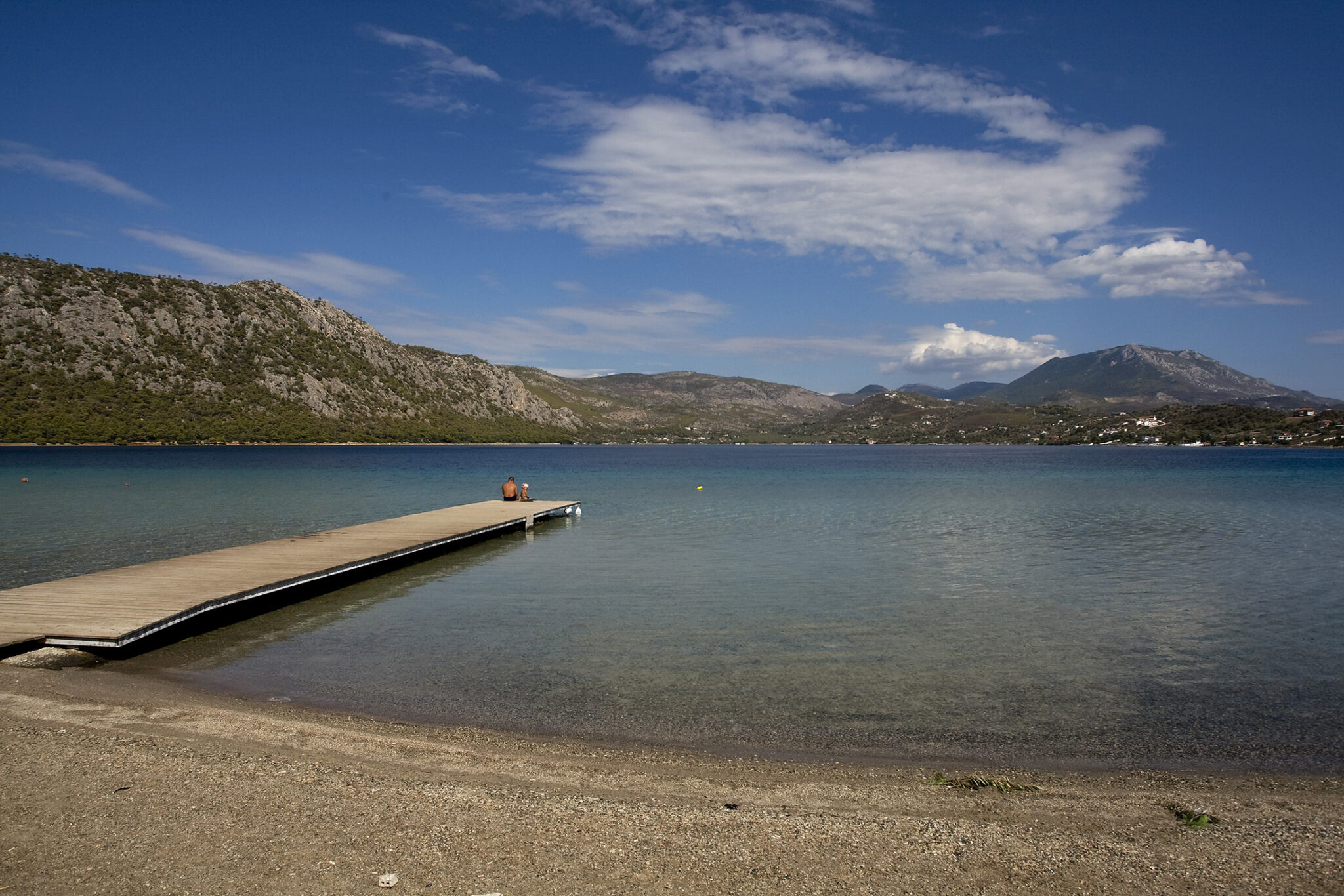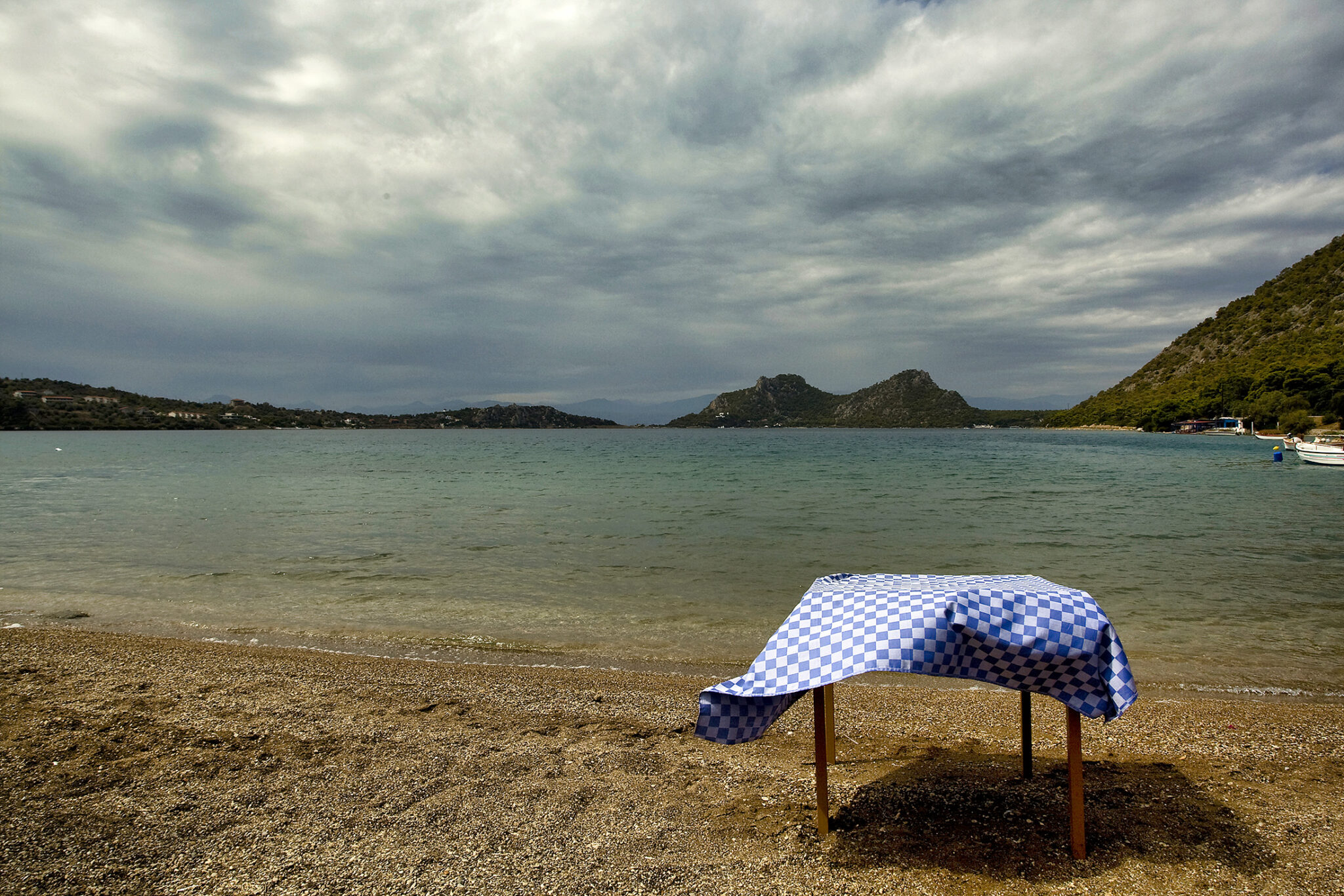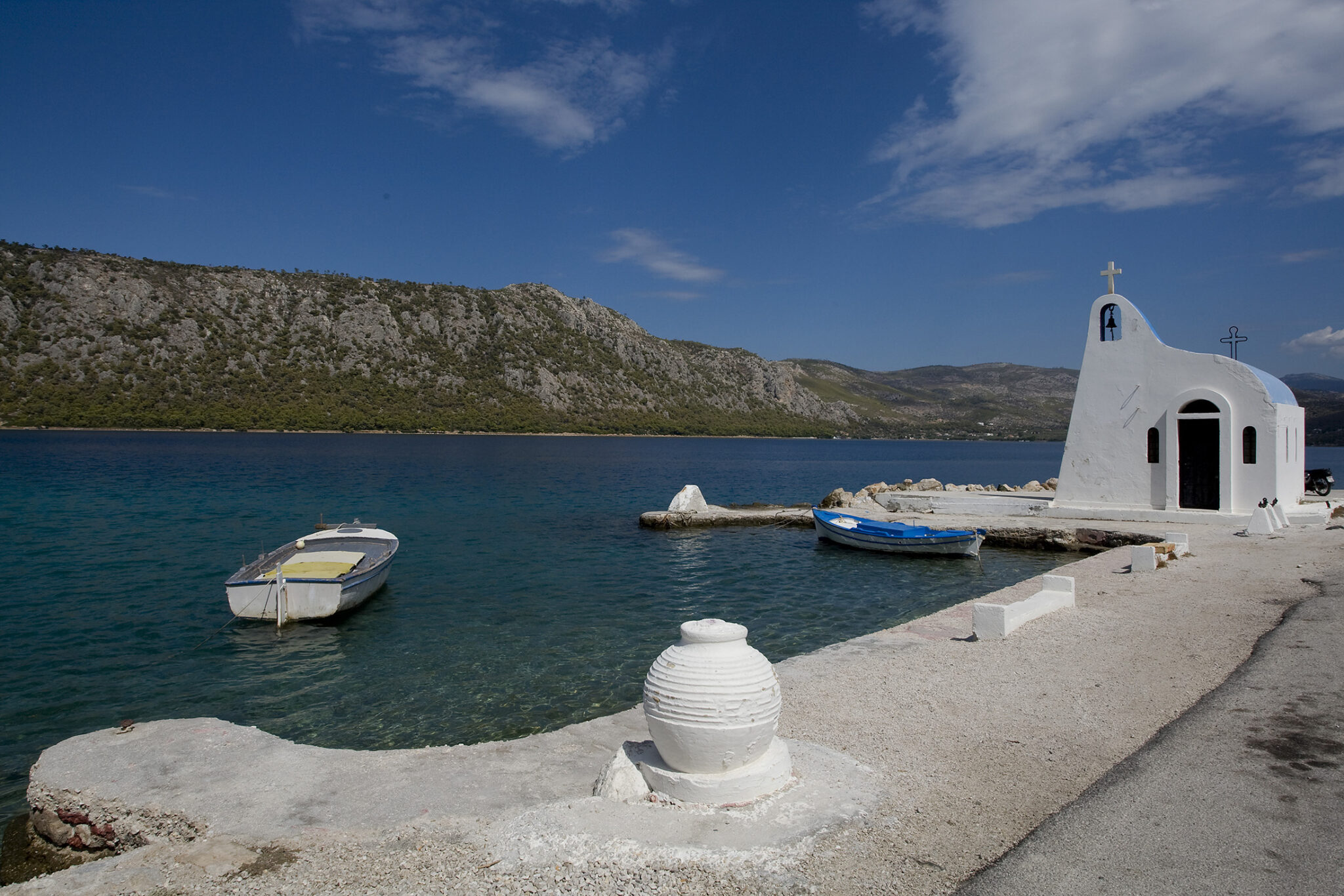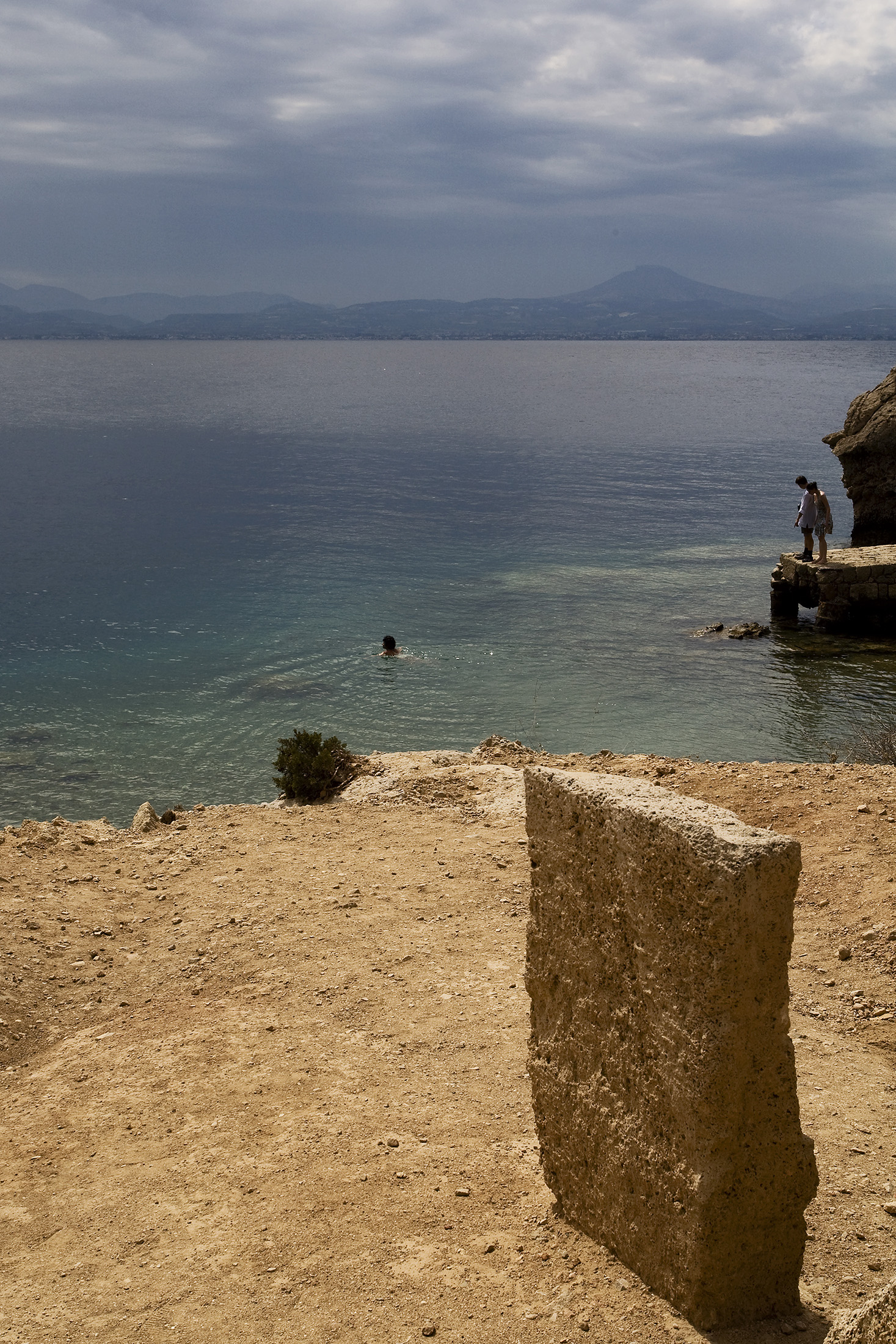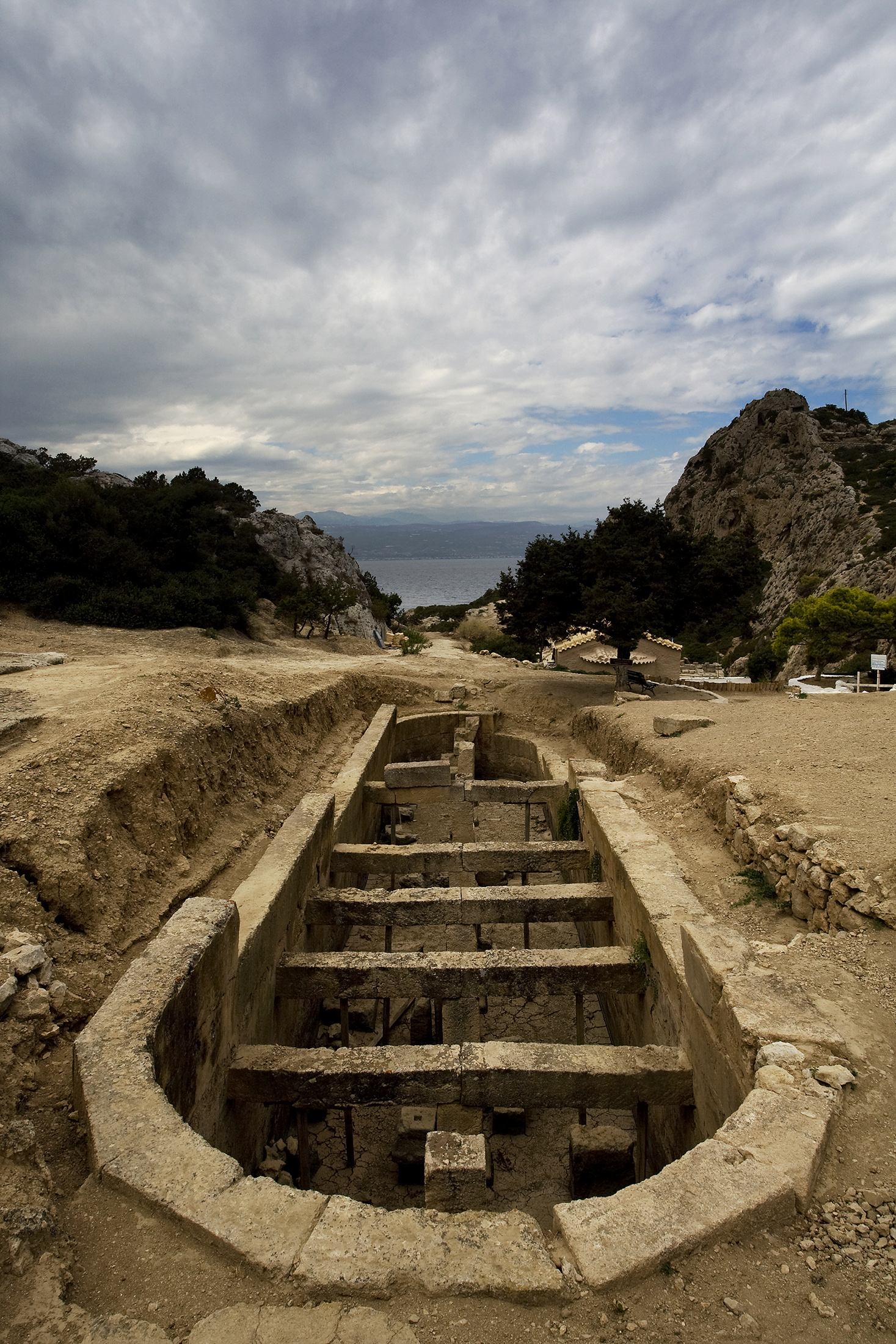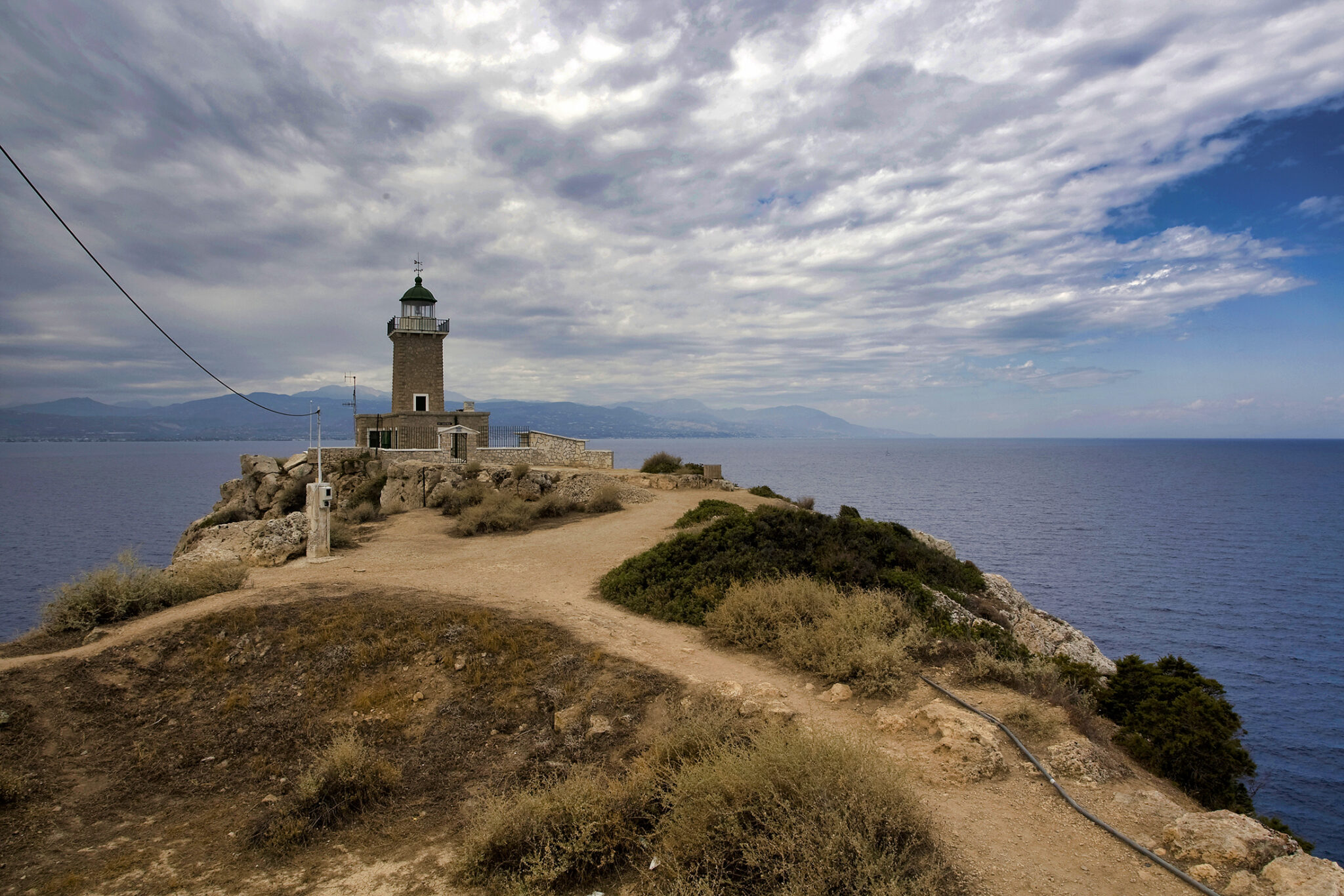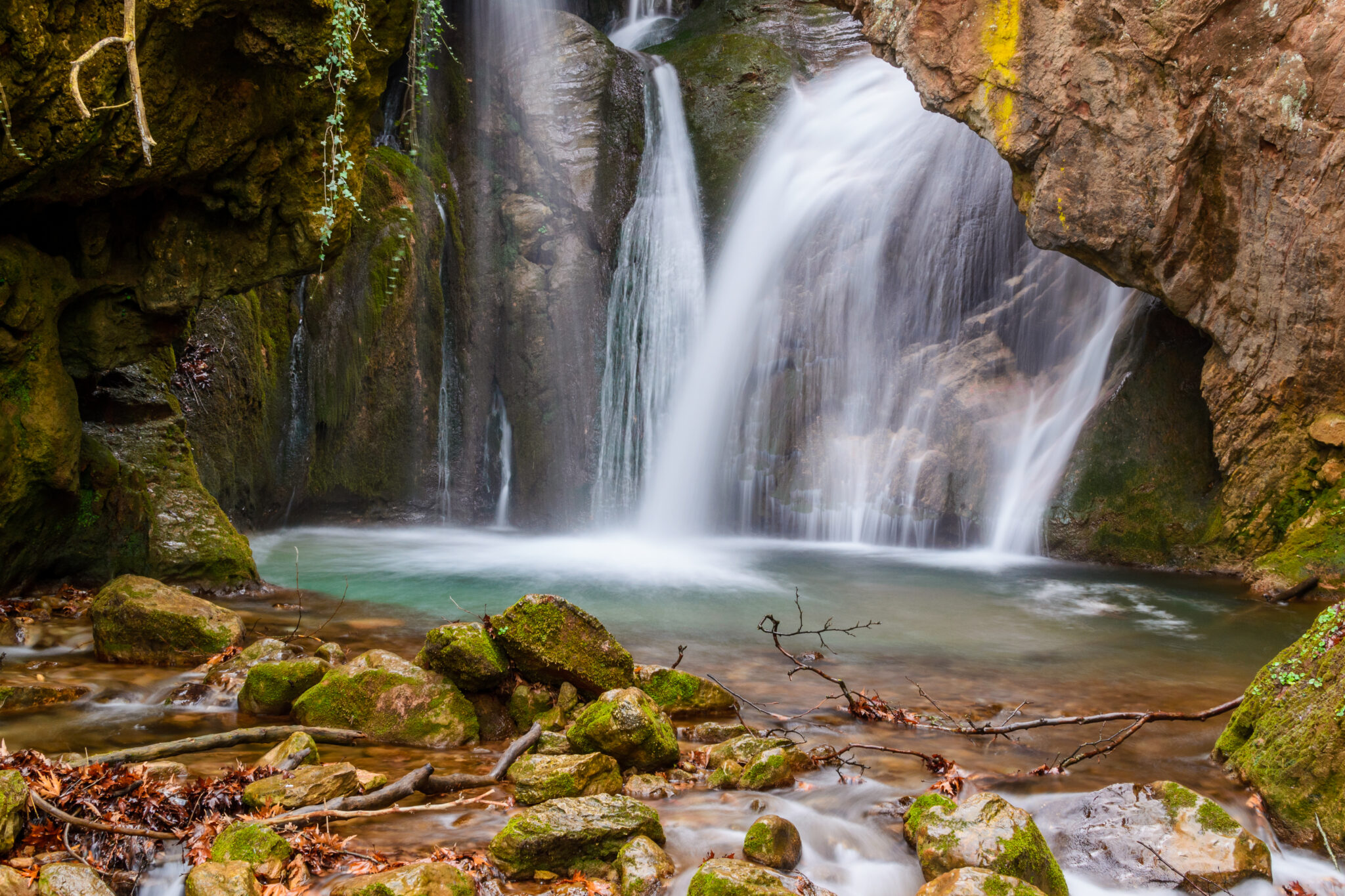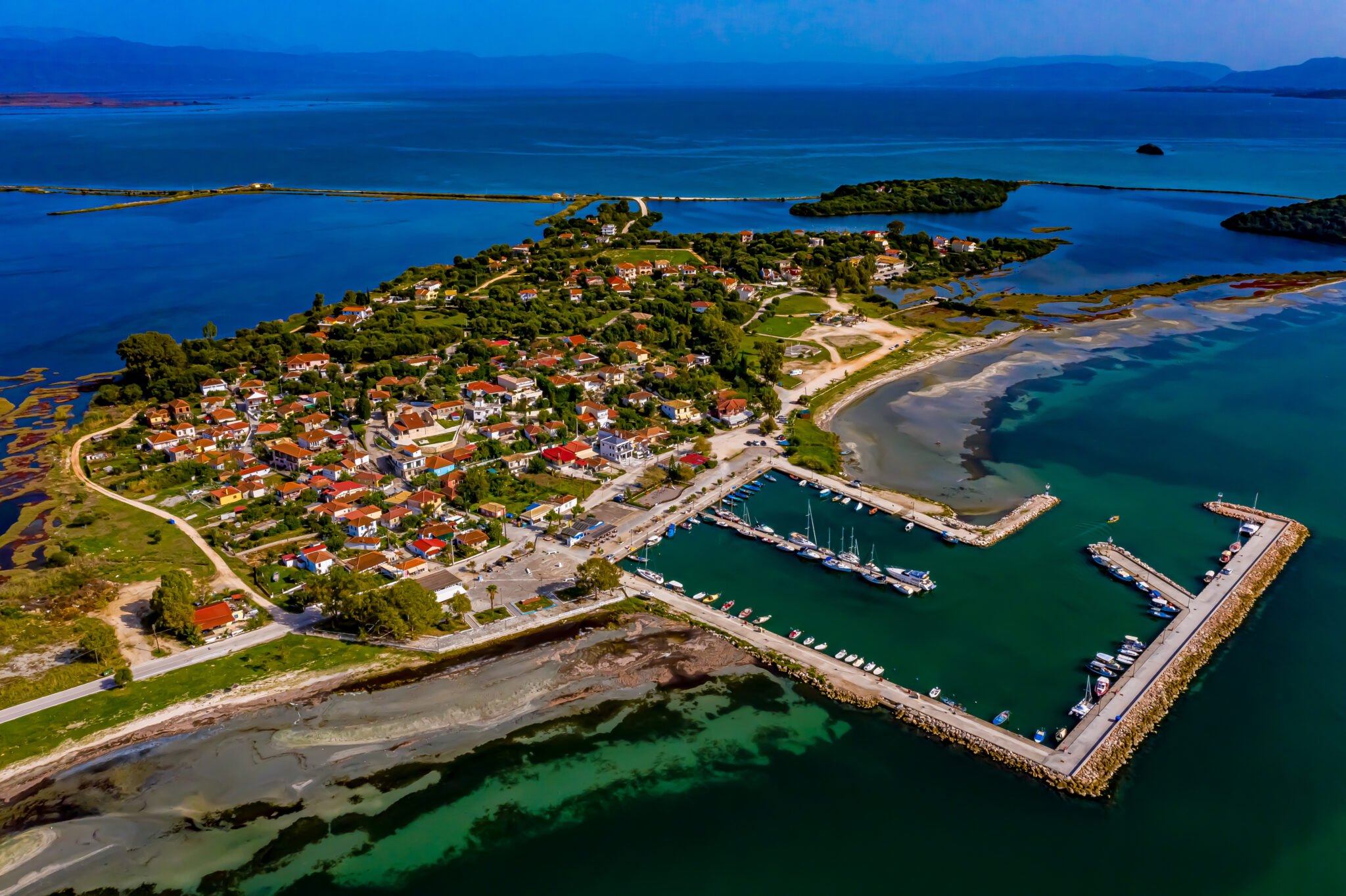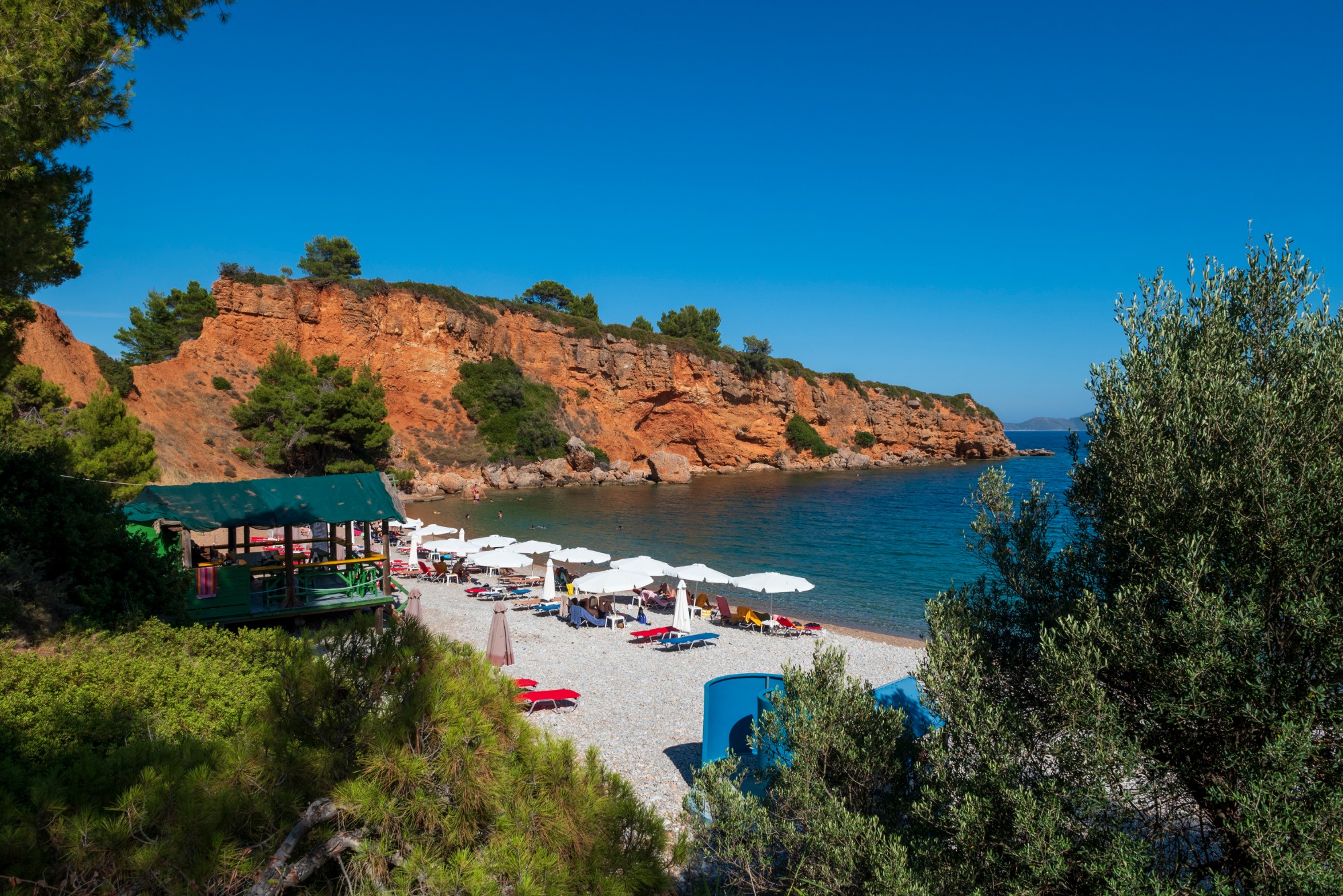Somewhat confusingly there are two lake Vouliagmeni (meaning sunken or sink whole) in close proximity to each other and both close to Athens. The smaller is at the southern edge of the Athens Riviera, on the road that leads to the temple of Poseidon at Sounion. The other, the larger of the two is westwards towards Corinth, past Eleusis. To be precise this is in fact a Lagoon separated from the Gulf of Corinth by a narrow strip of land to its south and west.
It is the latter that well will explore here. Turning off the motorway at the junction for Loutraki, you pass through this popular sea-side resort town, home to a famous casino, and snake down the coastal road at the feet of imposing Mout Geraneia. Passing the once flourishing village of Perahora, head south and down to the coast, where you’ll start to catch glimpses of the large lake, beyond the rugged hills and copses of pine.
As the lake unfolds before you as you cross the last of the hills you’ll notice at the southeastern edge that there is an opening that leads to the sea. This is from where the fishing boats leave this calm safe haven to go out fishing in the Corinthian gulf.
Shimmering lapis waters
Vouliagmeni of Loutraki is part of a striking and curious ecosystem. The lake looks as if it’s the caldera of a now dormant erupted volcano. Despite is proximity to Athens and the provincial capital Corinth, this body of water bordering the Gulf of Corinth has thankfully seen limited development. You will find some apartments and rooms for rent, and also several tavernas, serving mainly fresh fish on the water’s edge, which are reason enough for a visit. The area remains largely unexplored and hides many amazing sites to be discover and sights to be seen.
The lake’s longest side is 2 km and its greatest width stretches about 1 km. The waters are refreshed and replenished every 6 hours thanks to tidal phenomena. The banks are covered with fine sand and on its edges, the lake is quite shallow and the waters warm and murky, but after a about 10 metres or so it deepens sharply, ultimately reaching a depth of 40 metres. In general the calm, leeward waters are noticeably saltier than those in the bordering sea of Corinth.
Given the location it is no coincidence that the lagoon has been inhabited since prehistoric times. Excavations that were carried out here revealed, that circa 3000 BC there was a complex of houses on its shore, about 30 meters west of the channel that connects it with the Corinthian Gulf. Later, archaeologist unearthed another settlement (from around 2500 BC) 300 meters northwest from there, and it apears to have been inhabited well into antiquity, sometimes know as as Eshatiotida, sometimes as Gorgopis. Somewhere here, in fact, to the north, we believe that there was also a colony of the Megarians (once a powerful Archaic City-State), Aegiros, but so far it has not been located.
Almost every part of the lagoon is accessible however the beach in the northwestern part is generally considered the most beautiful. The lakes calm waters are also great for all kinds of water sports, whilst the lakeside road, which stretches for about 5 km, is ideal for a leisurely bike-ride. Any visit would not be complete without stopping over at the chapel of Agios Nikolaos in the southwest corner of the lake, right next to the mouth opening into the Sea of Corinth. Due to its quirky design and graphic location it has become a popular location for locals to stage their weddings and christenings.
Heraion and the lighthouse
Beyond the western edge of the lake, behind two camel hump hills lie some unmissable treasures. On the peninsular of Melagavi you’ll come across the atmospheric archaeological site of Heraion, with a multi epoch acropolis now in ruins, gazing strategically over the Corinthian Gulf. Below the Acropolis on the beach are the remains of the sanctuary and temples dedicated to the goddess Hera, after exploring the impressive ruins, it a wonderful place to take a refreshing swim. The cobalt waters become very deep very quickly
On the western tip of the peninsular overlooking the gulf, is the stone Melagavi lighthouse. Built in 1897 the lighthouse still illuminates the treacherous seas around the Halcyon islets every nigyht. The lighthouse is now owned and run by the Greek navy, and is only occasionally open to visitors.
Read also
Lake Plastiras: A Diamond in the Rugged Greek Heartland
Lake Skra, Greece’s Blue Lagoon with a Long History
Road trip to the Stunning Lake Kremasta in Mountainous Central Greece
.



